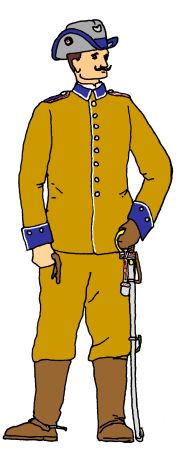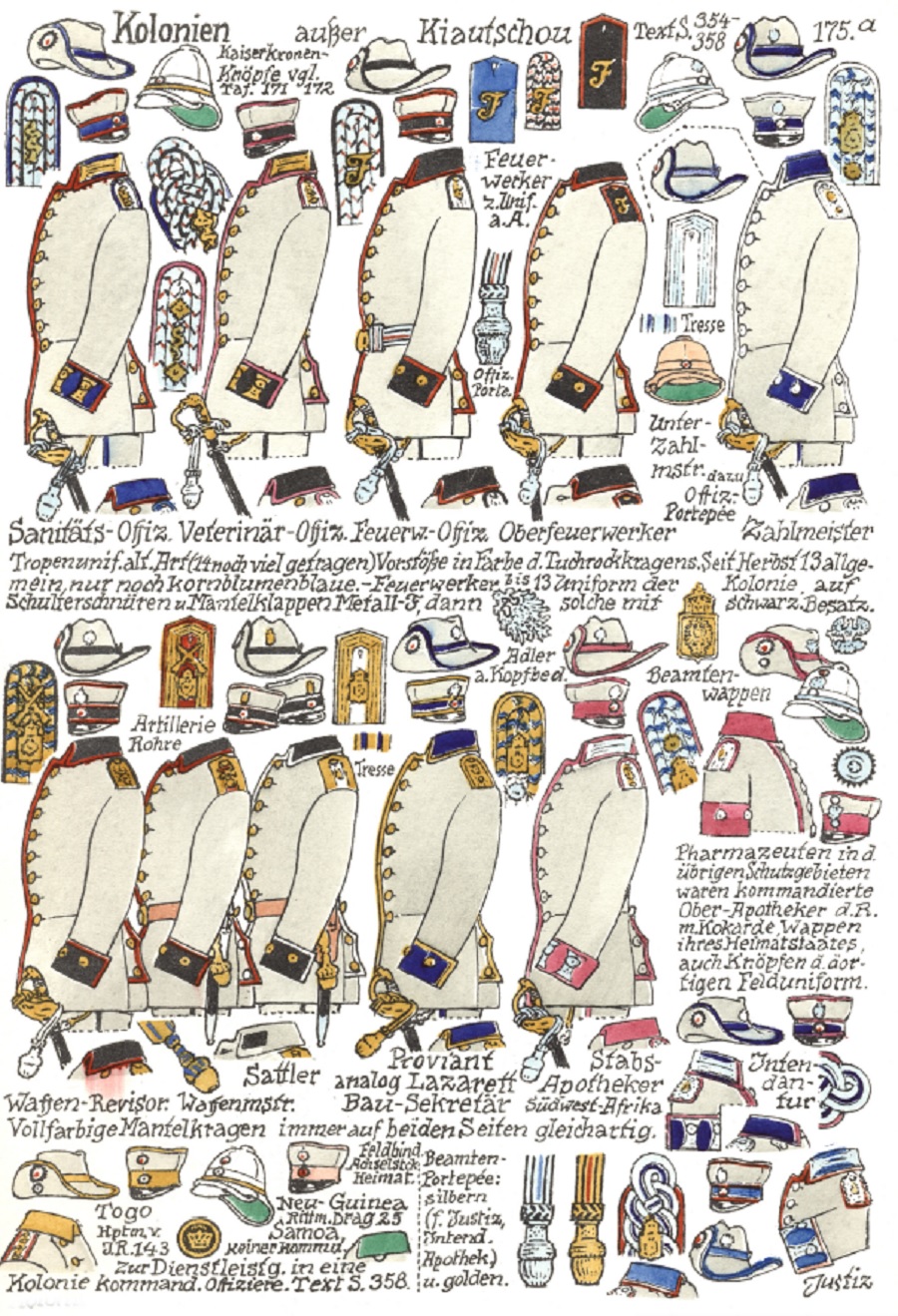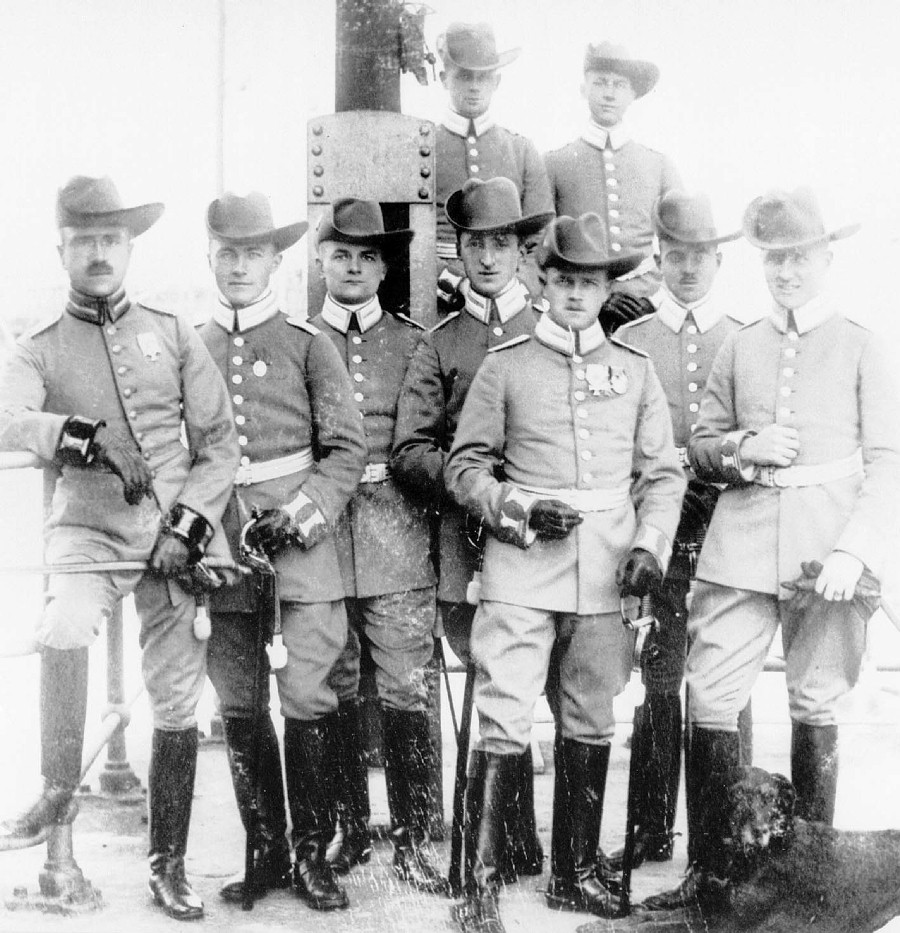|
|

Schutztruppe Paymaster
German South West Africa
He wears the corduroy uniform
of the Schutztruppe but with the facing colour (dark blue edged in
white) of a paymaster (Zahlmiester). The uniforms is without the Schutztruppe
collar and cuff Litzen but with the paymaster's small imperial eagle
on the front of the headdress. |
|
Background to the Officials and Non-Combatants
in the Colonies
The various non-combatant doctors, veterinarians, paymasters,
armourers, ordinance
officers, saddlers, dentists, pharmacists and inspectors that accompanied the Schutztruppe were
known in German as "Beamte", or officials.
Similar officials accompanied the Imperial Navy, Marine Infantry,
East Asian armies and Pascha Expeditions.
Officials were mainly posted to serve the armed forces
in the colonies but they also to an extent
served the European and African populations of the colonies. German
Schutztruppe doctors, for example vaccinated thousands of Africans. These personnel were classed as non-combatant
officials rather than
soldiers and yet did on occasion fight as officers or NCOs, commanding small units of Schutztruppe
in action in the absence of regular officers.
Uniforms of Officials and Non-Combatants
in the Colonies
The officials wore uniforms based on those of their host unit
(for example the Schutztruppe, Marine Infantry or Expeditionary
Corps) but with the insignia and facing colours of their specialist
trade rather than that of the host unit. Thus they can usually be
recognised initially in period photographs by their lack of
Schutztruppe Litzen on collar and cuffs and by their notable facing
colours. Closer examination often shows eagle or crowned shield
badges on the front of the headdress.
These insignia
differences were based on those of the Prussian army. For example
medics wore dark blue facing with red piping, armourers wore black
facing with red piping and paymasters wore dark blue facing with
white piping.
The exact study of these
uniforms is made difficult by two factors. Firstly that the uniform
regulations for officials were modified relatively frequently
several times and secondly the fact that almost all officials bought
privately tailored uniforms and therefore the use of them was
sometimes highly individual.
Highly Recommended
Reading
"The German Colonial Troops 1889-1918" by
Jürgen Kraus and
Thomas Müller (Published
by Verlag Militaria in German and English) gives a very full account
of the uniforms of the colonial officials. |
|

Schutztruppe Weapons Inspector
German
East Africa
He
wears the white tropical uniform of the Schutztruppe without
Schutztruppe piping but with the gold shoulder straps of a weapons
inspector (Waffen-Revisor). His cap is the same as the Schutztruppe
but with black hatband with red piping and a small white metal imperial eagle on the front of the headdress
above the cockade. |
|





